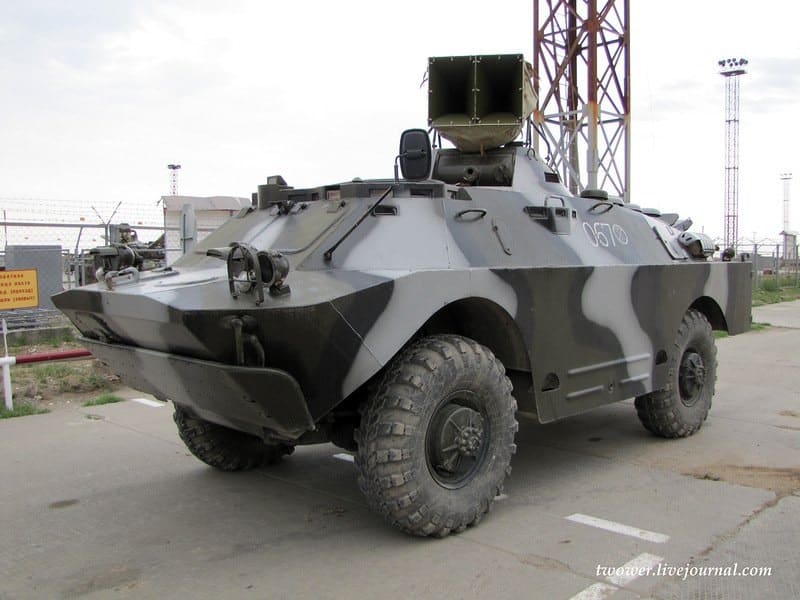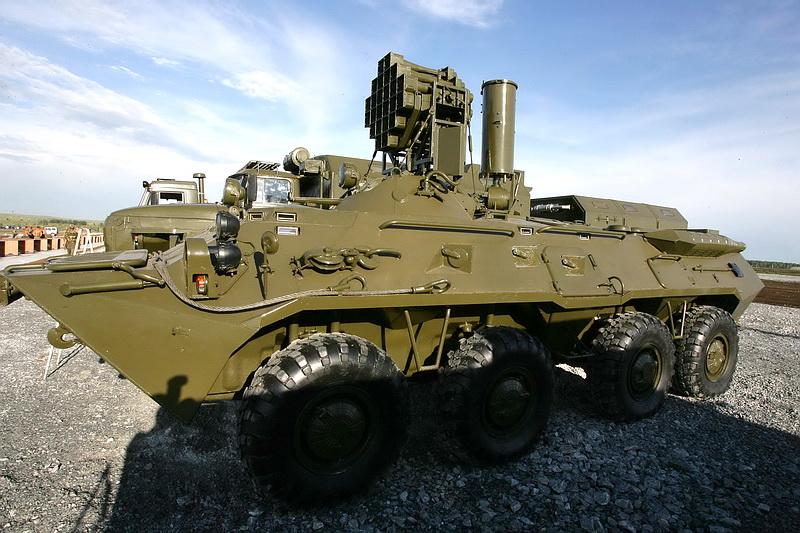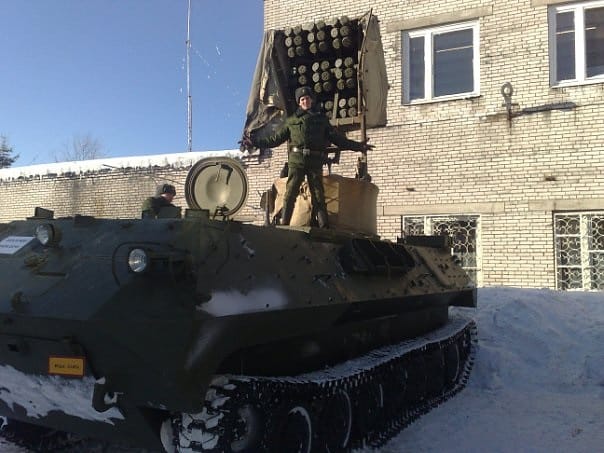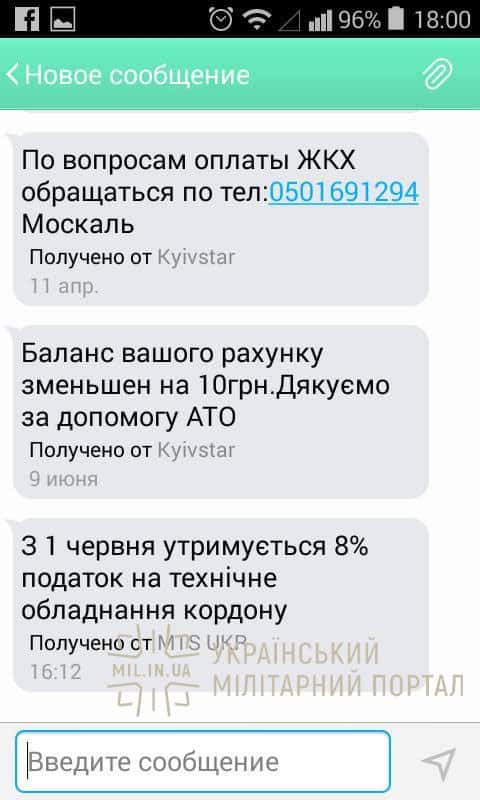*The article describes the general structure of psychological operations detachments of the Russian Federation Army. Due to insufficient scope of verifiable information, some data quoted in the text may lack precision or be outdated.
Russian Federation owns powerful forces for psychological operations (PsO). They include several components:
- PsO forces and means of military formations;
- PsO forces and means of special services;
- civil governmental agencies engaged into information operations;
- civil non-governmental agencies (government controlled) engaged into administering information operations;
- religious organizations engaged into administering of information operations.
The article explores in detail one component only – the psychological operations formations (PsO) of the armed forces of the Russian Federation.
Background
In the Russian Army, subdivisions to wage the informational psychological war are called the units for psychological operations (PsO). To compare, in the Armed Forces of Ukraine, they use the abbreviation IPsO – informational psychological operations.
Soviet-Japanese conflict in the area of Khalkhin Gol (May – September 1939)
The history of creating Russian PsO units dates back to the establishment of the Workers’ and Peasants’ Red Army (WPRA). The first specialized PsO units were created in a political division of the 1st Army group of the WPRA that conducted military operations in the area of the Khalkhin Gol river, during the Soviet-Japanese conflict.
Quote from a book “The Insight” by a propaganda special agent Burtsev M.I.:
“In those days, the political administration of the Transbaikal Military District forwarded to the political unit of the 1st army command the training editorial facilities for newspaper in Japanese, Chinese, and Mongolian languages — over 30 reporters, Orientalists scholars, translators, typographers with the printing presses and sets of hieroglyph fonts (of 3,000 characters). As part of the political unit of the army command, they created a TOE unit to work among the enemy troops and the population. I was charged to command the unit. Soon after, a loudspeaker squad arrived from Moscow, of five trucks and special vehicles.”
“In the end of July, we were already publishing three newspapers: “Voice of a Japanese Soldier”, “Chinese People Are Invincible” and the “Mongol peasant” (for Barga Mongols)”.
The book author also mentions Frunze’s expression about the role of special propaganda:
“The Khalkhin Gol operations fully confirmed the words by Mikhail Frunze about the political work as an “additional arms of the service.”
Despite the short term of hostilities (about 5 months) the Red Army command managed to engage into the psychological warfare the highly-qualified experts among journalists, typographers, orientalist scholars, and translators. It was the first time they established a separate unit to lead the psychological war.
Finland – (Soviet-Finnish war of 1939-1940)
Long before the German intervention into the USSR territory, the Red Army led active hostilities and was gaining combat experience. The war with Finland was a good school also for experts in psychological war. According to Burtsev, the propaganda units in political departments were expanded:
“Ideological work among the opposing troops was increasing in scale — it was conducted by the political command of the front, and the political army units, and the political units of divisions, while in the Khalkhin Gol it was administered solely by the political unit of the army group.”
In terms of significance of tasks delivered by the propaganda units in Karelian front, in 1940, the seventh unit was established as part of the WPSA political command – it was the propaganda unit.
“Seventh units were established at political commands in the borderland military districts. At the same time, they introduced dedicated in-house units in the army political units, in political units of rifle divisions — senior instructors on conducting work among the enemy troops. In the new administration, they established an information service on foreign states and armies.”
German-Soviet war
On June, 25, 1941, three days after the outbreak of war with the Nazi Germany, A Soviet bureau for military political propaganda was created.
According to Burtsev:
“The bureau was in charge of coordination of the military and political propaganda among the enemy’s troops and civilians. It was administered by the military and by the party propaganda and information units.”
“— Unit Seven has become an operational body for the bureau, — says chief of the Chief Directiorate for Political Propaganda of the WPRA. — Your task is to inform the bureau on the political and moral status of enemy troops, on the changes occurring in their army and behind the lines, to design propaganda documents upon the bureau’s assignment addressing the enemy population and soldiers, or the prisoners of war.”
Over the period of the Second World War, Soviet Army accumulated huge experience of conducting psychological operations, both strategical and tactical. More details on cases of operations and structure of the 1941-1945 propaganda units shall be covered in a separate essay.
Post–war period (1945-1990)
In the post-war period, Soviet Army was engaged in local conflicts of various intensity, and used forces and means of the army propaganda subunits in their confrontation with the USA (the so called “Cold War”). During this time, a key military propaganda authority was the Special Propaganda Command. It was part of the Chief Political Directorate of the Soviet Army and Navy (Glavpur).
“Since that time, the psychological warfare units in the Soviet Army have received the name of SPECIAL PROPAGANDA UNITS”
Whereas the subunits of the Chief Political Directorate were generally known in the army – everyone was aware of the “zampolit” function, the activities of Directorate Seven (special propaganda) was hardly known to anyone. The Special Propaganda Directorate closely worked with the military intelligence authorities.
The training of the specialized professionals for Unit Seven was provided by the Military Institute of Foreign Languages. In addition to military interpreters, they also trained officers for special propaganda. Additionally, the special propaganda units built up also with officers of related specialties, such as translators and interpreters, country experts, military journalists, politologists, specialists in publishing matter (printing specialists have been engaged from the topography troops).
Special propaganda directorate had the subordinate units and subdivisions, as part of military districts, armies, and division headquarters. In divisions, the special propaganda units were mostly deployed in the wartime.
The period of establishing armed forces of Russia (post 1991)
After the collapse of the Soviet Union and establishment of the army of the Russian Federation, special propaganda units were subordinate to the military intelligence – Chief Intelligence Directorate of the General Staff of the RF Armed Forces. It is mentioned on the webpage of the Department for Intelligence of the Academy of the General Staff of the Armed Forces of Russia:
[In 1991, upon being included into the system of the Chief Intelligence Directorate of the General Staff, and their forces and means of informational and psychological security, the respective training course was developed…]
Forces and means of special propaganda were integrated into the system of military intelligence forces.
During this time, in addition to the acting Centers for Foreign Military Information and Communication, they have been establishing the psychological operations squads (PsO). They earned their experience of psychological operations when engaged in the combat in Chechnya, Transnistria, republics of the former Yugoslavia, Georgia, in the ex-Soviet Asian republics, and other countries.
In the time of being subordinated to the military intelligence, PsO units used distinctive symbols – the combination of an international sign for psychology Ψ (“Psi”) and a carnation flower, a key heraldic character in the symbols of the Russia’s military intelligence.



From 2007 to 2012, the RF Ministry of Defense was headed by the civilian minister Anatoliy Serdiukov. His time in office, in addition to some corruption-related scandals, was the time of crucial change and restructuring of the army. The processes also reached the PsO iunits. Their structure was reformatted, and some units were made redundant.
In 2008, Russia launched the second Russian-Georgian war. They termed it as the “peace enforcement” operation. Despite the major issues in the Russian army highlighted during the campaign, Moscow still managed to gain the victory. Unlike the land troops, PsO units proved themselves very well in this operation.
In about the same time, Ukraine has become a key target for RF’s external impact. Therefore, Russian PsO units focused their efforts on our country.
With account for the Georgia campaign experience, the RF PsO units started to actively operate in Ukraine. Even though the active part of operations have been started by the PsO units since ab. 2004-2008, the open phase of information onslaught could be noticed by non-experts during the Revolution of Dignity, and in the operation on annexation of the Crimea. Upon the whole, the Crimean operation is a model for high skill of Russian Specialists for psychological operations. The following front for the RF PsO units was the Donbass. In this area, the confrontation is ongoing still today.
Present Structure of the RF Psychological Operations Formations
More details on the structure of the psychological operations units of the Russian Army are not available but the following structure can be described on the basis of fragmented data available in open sources:
- Administrative Body on Strategic Level
The general command for the PsO units is most probably administered by the military unit 54777 (located in Moscow). The assumption may be supported by the fact that this number of a military unit was used by the Special Propaganda Directorate of the Chief Political Command of the Soviet Army in the 1970/80s. Russians have not even changed the number for the military unit. It may imply that the unit kept an administrative authority over the PsO units.
Affiliation of the military unit number 54777 to the Special Propaganda Directorate is also confirmed from the biography pf Volodymyr Plastun – a Russian professor, a former member of staff of Directorate 7 (Special Propaganda Directorate):
In open sources, the military unit 54777 has a provisional title “72th Center of Special Service.” The term of “Special Service” was used in the Soviet Army, and further in the Army of Russia for the military units of the Chief Intelligence Directorate of the General Staff who were in charge of decoding the data received by the intelligence units.
In other words, the name of “72nd CSS” is used to cover the genuine purpose of the formation.
Until ab. 2010/12, 72nd CSS stayed under subordination of a military unit 45807. It is a provisional name for the Chief Intelligence Directorate of the General Staff (presently – Chief Directorate of the General Staff of the Russian Federation). It has been mentioned in the court decision:
In open sources, the military unit 54777 has a provisional title “72th Center of Special Service.” The term of “Special Service” was used in the Soviet Army, and further in the Army of Russia for the military units of the Chief Intelligence Directorate of the General Staff who were in charge of decoding the data received by the intelligence units.
In other words, the name of “72nd CSS” is used to cover the genuine purpose of the formation.
Until ab. 2010/12, 72nd CSS stayed under subordination of a military unit 45807. It is a provisional name for the Chief Intelligence Directorate of the General Staff (presently – Chief Directorate of the General Staff of the Russian Federation). It has been mentioned in the court decision:
[In pursuance of the stated directive, a commander of the military unit 45807 issued the orders dated Sept.5, 2008, No 098 “On Organizational Measures to Disband the Military Unit 35571” … chief of 72nd CSS major General Kostiukhin…]
In this time, when the military unit 54777 was subordinate to military intelligence, it was called the Center for Military Information and Communication.
The military unit had in subordination individual PsO squads – see photo below, a document on awarding a memorial sign by the commander of the military unit 54777 – “70 years to Special Propaganda” to a serviceman of the PsO squad (m/u 03127, Chita city). In other words, at that time, the PsO units were subordinate to the Moscow center for foreign military information of the General Staff m/u 54777.
In the mid 2000s, commander of the m/u 54777 was Major General A.Kostiukhin (mentioned in the court decision )
Presently, he is a lecturer at the Moscow State Institute for International Relations (Rus. MGIMO)
The personality of General Kostiukhin is also very interesting to consider. In some videos (they are currently hard to find, probably deleted), Kostiukhin is telling about Russia’s fight with the Anglo-Saxon world. The statements are highly illustrative of the person’s picture of the world.
As of 2011, the Center for Foreign Military Information of the General Staff (m/u 54777) was commanded by the Colonel Oleksandr Starunskyi. He is in the Myrotvorets data basis as a person who had been engaged in the military aggression against Ukraine.
Approximately after 2010-2012, PsO units have been suspended from the military intelligence subordination (Chief Directorate of the General Staff). Allegedly, the administrative authority for PsO forces and means (m/u 54777) is presently part of the Chief Operational Directorate of the General Staff of the RF Armed Forces (in place of the Chief Directorate of the General Staff).
Thus, according to one of the versions, the unit’s present name is the Center for Information Confrontation and Operational Disguise of the Chief Operational Directorate of the General Staff (according to other version – it is the Directorate for Informational Confrontation of the Chief Operational Directorate of the General Staff). There is also version three. It claims the directorates for informational confrontation perform the tasks within the area of responsibility of the military district, but separate PsO units have been transferred to the RF CSO.
- Psychological Operations Bodies of the Operational Strategic Level
The PsO bodies on the operational strategic level and the operational tactical level include Units for Informational Confrontation and Operational Disguise. They are part of the headquarters of each of the four military districts. It can be evidenced by the following document quoting the respective information:
Each of the four military districts include several armies (basic military or tank troops), as well as the navy troops. The headquarters of the armies and fleets include the Units for Informational Confrontation and operational Disguise, that are part of army headquarters, Air Forces, and foreign military force groupings (RF military base in Armenia, PMR, a.o.). The illustration of structure of the administrative bodies and PsO units of the military district:
Individual units and divisions of the InConOpD, as well s PsO units are established in the RF army groupings stationed in other countries: military bases in North Osetiya, the unrecognized Transnistria, Armenia, Tajikistan, and other countries. Moreover, these are also the groupings engaged in the foreign combat operations, such as in Syria and Ukraine.
For example, as part of the Southern Military District, in addition to the InConOpD Directorate of the district headquarters, a separate military command administration was established – the Center for Territorial Troops (the name as of 2016). The Center has a role of managing the formation of the RF AF on the territory of the occupied areas of the Donbass (1st and 2nd army corps “L/DMR”). The center for Territorial Troops has a Directorate or Informational Confrontation. The Directorate manages the PsO forces and means engaged in the Donbass.

- Center for Foreign Military Information and Communication
Centers for Foreign Military Information and Communication (CFMIC) – these are the units in charge of analyzing open sources information related to the military capacity of foreign armies, the military political situation in certain countries (by regions), and evaluated moral and psychological condition of the army and civilians in these countries. They have the regional specialization.
To date, there is no verified data to confirm their role in the structure of the PsO formations of the RF AF. According to one version, the FMIC centers have been reformatted into separate units for psychological operations. According to another version, the FMIC centers stayed as part of the Chief Directorate of the General Staff or Chief Operational Directorate of the General Staff, while individual PsO units are subordinate to these centers.
Numbers of military units of the FMIC centers are the same as of the PsO units. The CV of a former CFMIC serviceman of the East Military District quotes the number of a military unit 03134 – the same number is assigned to the PsO unit of the East Military District of the Khabarovsk city. That is why the PsO units might be part of the FMIC centers.
It is interesting to note the interaction between the FMIC centers and civil information units of the RF. Another CV of a former serviceman from the FMIC centers states that during the period from 2000 to 2011 he had served his duty in this center. During the same time, he also worked as a reporter in the “Military Secret” program on a television channel Ren-TV:
- Psychological Operations Bodies of the Operational Tactical Level
Operational Tactical level of the PsO units include separate units for psychological operations (SUPsO). In Russia’s Armed Forces, there are four PsO units:
- SUPsO of the Western military district (m/u 03126) Sertolovo-2, Leningrad oblast.
- SUPsO of the Central Military District (m/u 03138) Yekaterinburg
- SUPsO of the Southern Military District (m/u 03128) Rostov-on-Don
- SUPsO of the Eastern Military District (m/u 03134) Khabarovsk
Each of them has a regional specialization and fulfil the assignments in the interests of their military district. For example, the squad in Khabarovsk focuses on China and Asia. The squad is built up of the servicemen with the knowledge of Oriental languages, Oriental country experts, etc.
In terms of the military machinery active-in-service of the Russian psychological operations units, they are similar to the IPsO centers of the SOF of the Armed Forces of Ukraine. However, there is a crucial difference.
Russian detachments of psychological operations have in service mobile and fixed printing and publishing facilities, as well as loud-speaking stations based on the armored vehicles BTR-80, BRDM-2. The Ukrainian sources often mention the PsO unit 324 m/u 35571 of Kaliningrad city, and a PsO unit m/u 03132 of Chita city. 324 PsO unit was de-operationalized in 2008 (mentioned in the court decision).
The recent reference to the m/u 03132 in Chita dates back to appr. 2011-2014. Taking into account the fact that the Chita unit is located on the territory of the Eastern Military District, it may be assumed that presently it has been dissolved. Even more so, the district already has a unit for psychological operations – in Khabarovsk city.
- Psychological Operations Bodies of the Tactical Level
The tactical level include PsO units (not to confuse with the individual squads) of non-divisional (independent) intelligence brigades. The units do not have their number of the m/u. Certain intelligence brigades have some very interesting military links. They have been established in times of the Minister Serdiukov. The prototype for such brigades was the 100th independent intelligence brigade of Mozdok city (North Osetiya). It was established in 2009, upon the analysis of the Georgia campaign. They followed the structure of the reconnaissance brigade of the US Armed Forces.
Further, the staff structure of the brigade has changed several times. Later, the experience of establishing it has been deemed as successful, and the brigades were further established in each of the four military districts, and also in the Black Sea Fleet. The reconnaissance brigade is interesting by combining several intelligence subunits acting in the district’s interests:
- Intelligence battalion
- Special Operations Detachment (SOD)
- Radio-electronic reconnaissance and combat battalion (RER/REC)
- unmanned aerial systems troop
- psychological operations unit
- supply subunits.
Each brigade is subordinate to the intelligence command of the district (fleet). Thus, the psychological operations unit, that is part of the brigade, is not directly subordinate to the m/u 54777.
It is interesting to consider the history of establishment of the intelligence brigade 127 of the Black Sea Fleet of Russia. It was established in the late 2014 in Sevastopol, in place of the former training center of the Ukrainian Navy.



Before the annexation, there have been several units of the Ukrainian Navy stationed in this training center, including the 72nd center of Information-Psychological Operations (PsO) of the Ukrainian Navy. After the start of occupation, half of the center’s manpower left to the mainland Ukraine, where they continued their service. Some other servicemen stayed in Crimea, betrayed their loyalty oath and defected to the enemy’s side. Some of the “Crimean” traitors continued their service in the psychological operations unit of the intelligence brigade 127. They continued in the same military barrack where they used to serve the Ukrainian fleet.
The general structure – upon the whole, the available information on the psychological operations units of the Russian Army can be illustrated in the following scheme:
There is still an open question about the presence of the psychological operations unit as part of the Special Operations Forces of the Russia’s Armed Forces. After the SOF Command of the RF AF was established in 2012, they received into their subordination several special operations units (special intelligence units). Other special operations brigades (SOBs) and independent squadrons/centers stayed within the subordination of military districts and the military intelligence. It may be assumed an independent PsO center/squadron might have been established as part of the RF SOF to act in the interests of the SOF Command. However, no information is available thereon.
Arsenal of the Psychological Operations Units
Any description of the technical equipment of psychological operations units needs to focus on the armament of independent PsO units. In fact, they may carry operations jointly with the combat detachments, directly in the combat area. The key armament of the PsO units includes the following:
Loud-speaking stations used for sound influence on the enemy’s manpower, for imitation of the machinery traffic, combat noises, etc.
- Loud-speaking station ZS-88
- Loud-speaking station ZS-82
- Loud-speaking station ZS-96.2
- Loud-speaking station MZS-83
Use of ZS-88 in Syria:
- Mobile and fixed stations to produce printed materials







- Propaganda artillery and aviation ammunition used by the respective troops to deliver to the enemy’s manpower the printed propaganda products.


Illustrations of materials of the Russian printed propaganda:
- Radio-electronic combat stations.
The category may include such facilities as “Leer -2 and “Leer-3.” They are in service of the radio electronic combat subunits but may be used in the interests of the psychological operations units.
“Leer-3” is a station imitating the work of the basic station of mobile connections. Therefore, all mobile phones around the station would automatically be connected to it. It helps to automatically localize groups of subscribers (individual subscribers), and to automatically send the co-ordinates to their artillery to administer a blow.

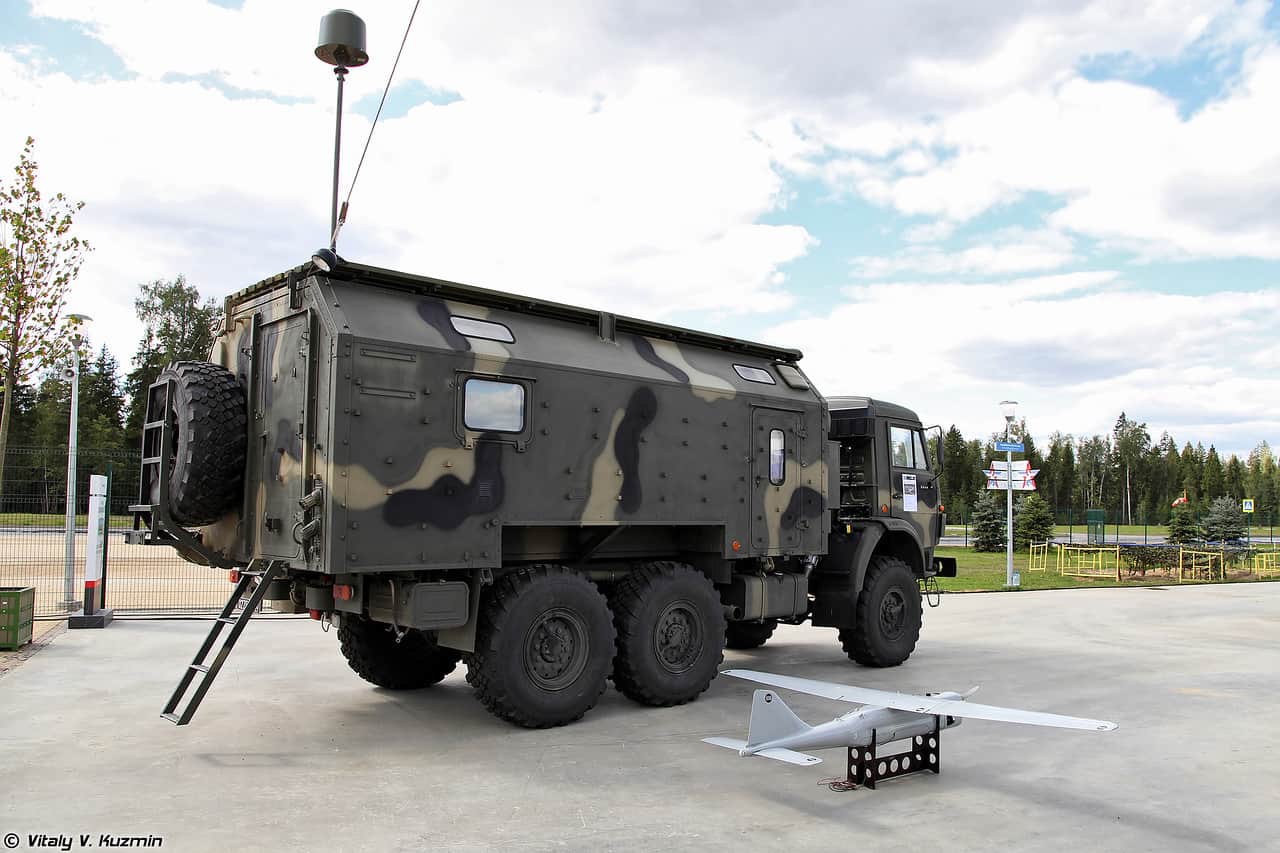
As a radio relay station, the “Leer-3” station uses the UAV Orlan-10, which is part of the station.

For the purposes of psychological influence on the enemy, the station may send text messages to groups of subscribers of the enemy (or to individual subscribers). Examples of text messages received by the Ukrainian military and by civilians:
Moreover, it may be assumed that given the access to the telephone numbers of a group of subscribers of the enemy, the station may automatically search for profiles of the subscribers in social media.
The most interesting feature are the technical means acquired in the recent 8 to 10 years, due to rapid growth of digital computer technologies and social media. In the recent decade, there has been a significant shift of informational confrontation into the cyber-space.
There is no verified or precise information on any available information on any software and hardware facilities in the arsenal of Russian psychological operations units to monitor and influence the cyber-space. However, taking into account the verified information on the available software in the related military and security services (Foreign Intelligence Agency and FSB), it may be assumed that the psychological operations units do have such means in their disposal.
For instance, as early as in 2012, Foreign Intelligence Agency of Russia held a tender to procure the specialized software to monitor and exert informational influence in social media.
Certainly, over the recent eight years, the equipment has been significantly improved.
Conclusions
Armed Forces of the Russian Federation have many years of experience of psychological operations, dating back to the 1930s. Over many decades, the experience has been accumulated and improved.
The current system for psychological operations of the Russian Army includes multiple layers and is flexible. It is beingly continuously improved and developed.
In the second half of the 2000s, the Russian army command focused on the development of the radio-electronic combat systems and cyber-operations systems. It largely expanded the capacity of the Psychological operations units.
Moreover, the capacity of PsO units has been largely enhanced by the experie3nce of hybrid military operations by the Russian army in armed conflicts on the territory of the former Soviet Union, and in other countries in other regions. By all means, huge experience has been earned in the course of military aggression on the territory of Ukraine.
Psychological operations units of the Russian army, jointly with the special operations forces and the special operations forces, are the key tool of the Russia’s military aggression exercised in the form of the “hybrid war.”
To counteract the informational psychological impact of the respective units of the Russian Army, Ukraine shall enhance the work to collect information on the structure, composition, technical capacity, forms and methods of operations of the Russian PsO units.
By MARINER spec. for MIL.IN.UA
SUPPORT MILITARNYI
Even a single donation or a $1 subscription will help us contnue working and developing. Fund independent military media and have access to credible information.


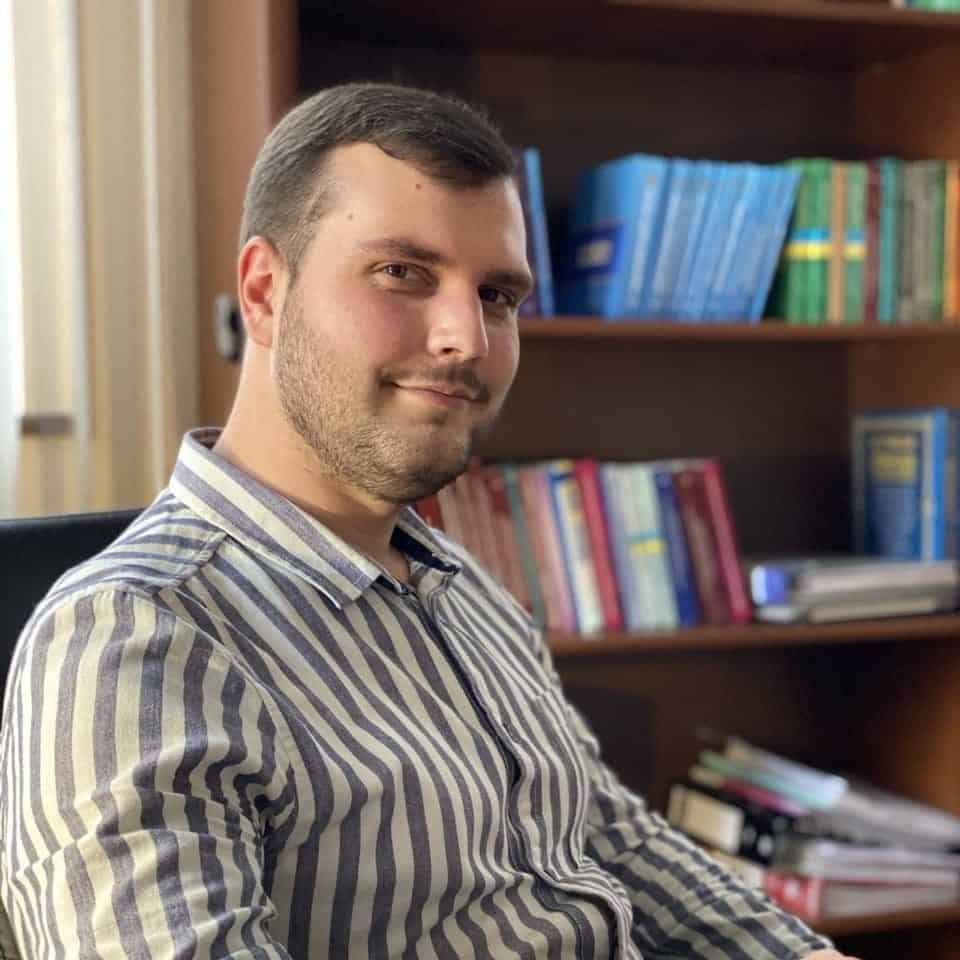 Vadim Kushnikov
Vadim Kushnikov 
 Андрій Тарасенко
Андрій Тарасенко 
 Юрій Юзич
Юрій Юзич 
 Віктор Шолудько
Віктор Шолудько 
 Роман Приходько
Роман Приходько 

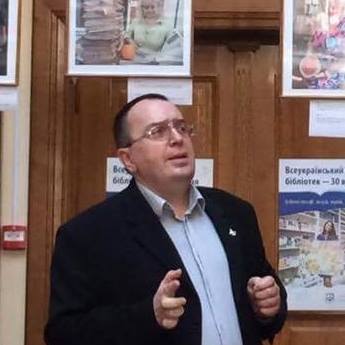 Андрій Харук
Андрій Харук 


 Yann
Yann 
 СПЖ "Водограй"
СПЖ "Водограй" 

 ГО "Військова школа "Боривітер"
ГО "Військова школа "Боривітер" 






















